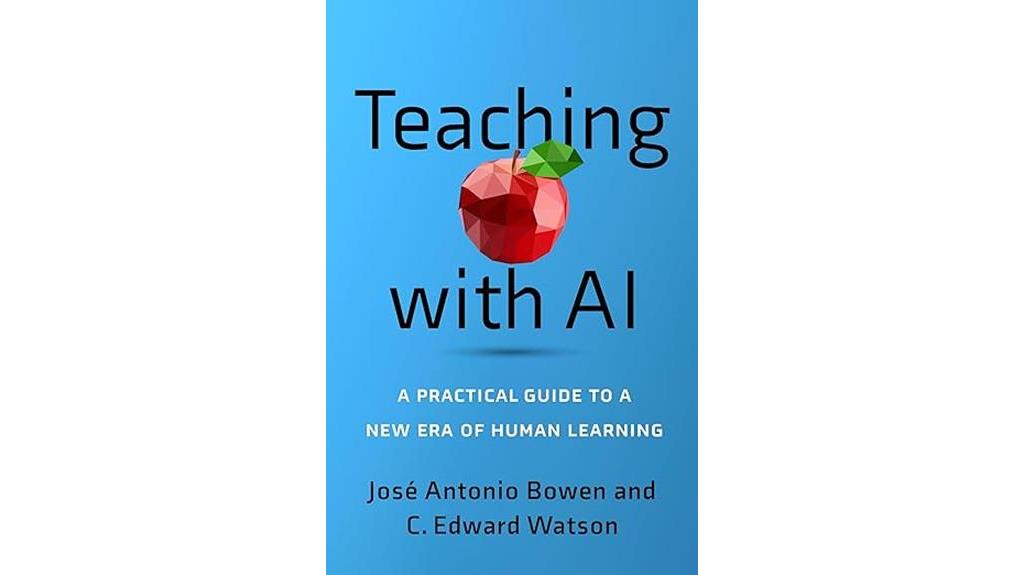As I reflect on "Teaching With AI: A Practical Guide", I'm struck by the authors' nuanced approach to integrating artificial intelligence into the classroom. They offer actionable strategies for educators, but also acknowledge the potential pitfalls of relying too heavily on technology. I find myself wondering: how can we harness AI's power to enhance learning without sacrificing the human touch that's so essential to education? The book's balanced perspective has piqued my interest, and I'm eager to explore this question further – and consider the implications for the future of teaching and learning.
Key Takeaways
- The book provides practical advice for integrating AI into classrooms, offering concrete ideas and engaging writing style for enhanced readability.
- Criticisms surround the book's oversight of AI's complexities and potential drawbacks, including negative impacts on human learning and creativity.
- The book emphasizes AI's role in supporting personalized learning and real-time feedback, but acknowledges potential drawbacks like decreased human interaction.
- Authors' optimistic claims about AI enhancing creativity lack concrete evidence, and potential biases are linked to their affiliation with digital innovation organizations.
Evaluating the Book's Practical Advice
As I delve into the book's practical advice, I find that 'Teaching with AI' offers numerous concrete ideas for integrating AI into the classroom, making it a valuable resource for educators seeking to leverage technology to enhance teaching effectiveness. I appreciate the authors' engaging writing style, which makes the book an enjoyable read. The well-researched strategies and ideas presented can be applied to various teaching contexts, making it a useful guide for college educators concerned about authentic learning in the AI age. I find the book's insights into the technical aspects of AI tools and discussions on policies for their ethical use in academia particularly informative and relevant to my own teaching practice.
Criticisms and Controversies Surrounding AI
While delving deeper into the book's advocacy for AI adoption, I start to notice that the authors gloss over the complexities and potential drawbacks of relying on AI in education. I'm concerned that they don't adequately address the potential negative impacts on human learning and creativity. The authors' optimistic assertions about AI enhancing creativity lack concrete evidence, reflecting a blind endorsement of technology. Furthermore, I question the authors' backgrounds and potential biases, particularly one author's affiliation with an organization promoting digital innovation in education. This connection suggests a possible agenda to advocate for AI adoption without critical scrutiny, urging educators to adopt a more cautious approach to new technologies.
Implications for Educators and Learning
Through my examination of the book's strengths and weaknesses, I've come to realize that the implications of teaching with AI for educators and learning are far-reaching, requiring a critical evaluation of how technology shapes our approaches to pedagogy, student engagement, and educational outcomes. I believe educators must consider how AI can support personalized learning, real-time feedback, and data-driven instruction, while also acknowledging potential drawbacks, such as decreased human interaction and over-reliance on technology. As I weigh the benefits and limitations, I'm convinced that educators must take an active role in shaping AI's role in education, rather than passively adopting new tools. By doing so, we can harness AI's potential to enhance learning while preserving the human touch that defines our profession.
